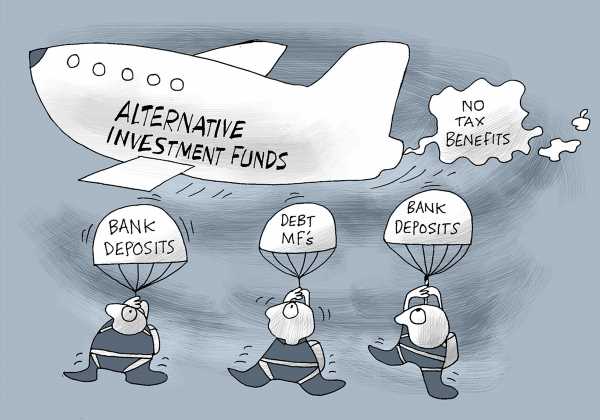‘Given that debt AIFs, by nature, target a higher portfolio return, it is likely to attract investors like HNIs, family offices, etc, looking for a higher yield debt product.’
With the government deciding to end tax benefits enjoyed by debt mutual funds, wealthy investors and family offices could turn to alternative investment funds (AIFs), chasing high-yielding assets.
The Lok Sabha passed the Finance Bill with 45 amendments, taxing gains from debt funds, irrespective of the holding period, at the income tax rate.
The move has put an end to the long-term capital gains taxation and indexation benefits enjoyed by the Rs 40-trillion MF industry.
From April 1, the post-tax returns from investing in debt MFs are expected to fall sharply, particularly for those in the highest tax bracket.
Industry players say AIFs, aimed at high net-worth individuals (HNIs), are set to gain thanks to the tax parity with debt MFs.
“Currently, there is a difference in taxation at the investor level between debt AIFs and debt MFs. The former are taxed at a marginal rate while the latter attract a long-term capital gains tax rate of 20 per cent (if held beyond three years), along with indexation benefit,” Nilesh Dhedhi, fund manager, Avendus Structured Credit Fund, tells Business Standard.
Now, Dhedhi says, the returns will only be a function of yields.
“With the new Finance Bill 2023, the applicable tax rate for both categories will be the same going forward and therefore, the post-tax return will purely be a function of pre-tax return generated by the fund,” Dhedhi adds.
“Given that debt AIFs, by nature, target a higher portfolio return, it is likely to attract investors like HNIs, family offices, etc, looking for a higher yield debt product,” he says.
Within the AIF space, private credit funds aim to generate double-digit returns.
Performing credit funds, real estate funds, special situation funds, venture debt funds, and distressed funds target an internal rate of return between 8 per cent and 20 per cent.
In comparison, most debt MF returns tend to be between 4 per cent and 8 per cent.
To illustrate: Post-tax returns for certain AIFs can be around 9 per cent, assuming a 15 per cent yield with 42 per cent tax.
Earlier, post-tax return for debt MFs worked out to be 7-8 per cent, assuming an 8 per cent yield with three-year indexation benefit and 20 per cent LTCG tax.
Despite the higher pre-tax returns generated by AIFs, debt MFs still fared better because of the tax advantage.
Going ahead, post-tax return from debt MFs may look unfavourable when compared to private credit.
However, as the minimum investment amount for AIF investments is Rs 1 crore (Rs 10 million), small investors may continue to stick with debt MFs or move to bank fixed deposits as per their risk appetite.
The move by the government has been appreciated on the grounds that now investments will be decided purely on risk-return matrix and not on tax considerations.
“Now that this anomaly (differential tax treatment) is gone, investors will make portfolio allocation choices as per risk, return, and investment manager’s track record,” said Anshu Kapoor, president and head, Nuvama Asset Management.
“This is a big boost to yield-oriented alternative products like performing credit, real estate, credit, and other categories like infrastructure, commercial real estate, and distressed assets,” said Kapoor, adding that such a move will also give a boost to retail investments in government securities and corporate bonds.
Source: Read Full Article
